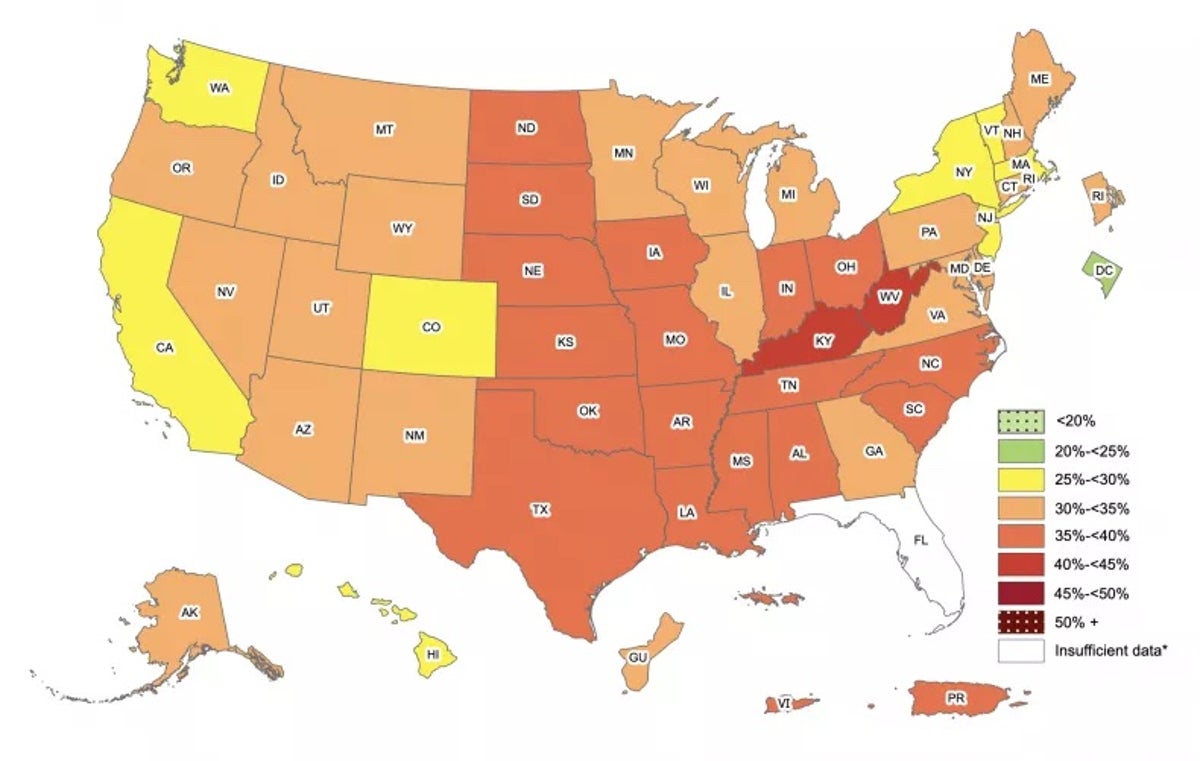
The Centers for Disease Control and Prevention (CDC) has released new data on the state of obesity in states across the country.
The new data shows that the prevalence of obesity in a state is strongly correlated with its levels of income and wealth, level of education and access to food.
West Virginia, which is one of the nation’s poorest and least-educated states, is also currently its most obese: more than 40 per cent of West Virginians self-reported that they have obesity, followed closely by neighbouring Kentucky. California, Washington, Colorado, New York and Vermont were among the states with the lowest levels of obesity in the country.
While the CDC continues to link obesity and weight gain to a range of health issues, including worse outcomes from Covid-19, heart disease, stroke, diabetes and some cancers, a number of medical professionals in recent years have cast doubt on obesity or weight more generally as an accurate measure of a person’s health.
The CDC uses body mass index (BMI) to calculate obesity levels, a measure of a person’s weight compared to their height, even though BMI has been criticised by researchers at the University of Pennsylvania for failing to take into account a person’s muscle mass, bone density or overall body composition, as well as failing to account for differences in race and gender.

BMI also fails to account for other critical indicators of health, including a person’s blood pressure, cholesterol and blood glucose levels. It is possible to have what is considered a healthy BMI and be considered unhealthy by other, more direct metrics, or what is considered an unhealthy BMI and be considered quite healthy on other metrics.
Given the differences between bodies, it is difficult to establish a uniform measure of a person’s relative health or lack thereof. The overwhelming focus on BMI and weight can contribute to a host of other problems with body image and eating habits, with nearly one in ten Americans expected to struggle with disordered eating behaviors at some point in their lifetime.
The CDC’s data does, however, give a snapshot of the regional differences in health and living conditions in the US. According to the new data, the South and Midwest have the highest rates of obesity, followed by the Northeast and West further behind.
Hispanic, white and Black adults, on the whole, have higher rates of obesity than do Asian adults across all US states.







